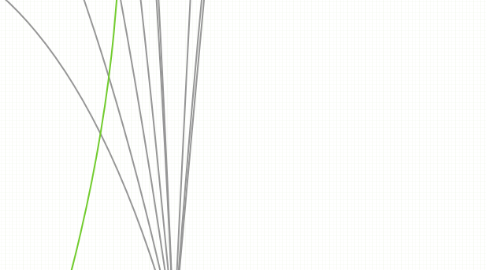
1. pharmacological
1.1. Placebo effect ?
1.2. Side Effects
1.2.1. sleep disorders
1.2.2. drug interactions
1.2.3. L-Dopa
1.2.3.1. dyskinesia
1.2.3.2. on/off effects
1.2.3.3. nausea
1.2.4. psychosis
1.2.5. Abnormal sex behaviour
1.3. Oral treatment
1.3.1. Drugs
1.3.1.1. L-Dopa
1.3.1.1.1. loss of efficiacy after some years
1.3.1.2. Carboxylase Inhibitors
1.3.1.2.1. Benserazide
1.3.1.2.2. Carbidopa
1.3.1.3. MAO-B Inhibitors
1.3.1.4. Anticholinergic
1.3.1.5. Amantadine
1.3.1.6. Dopamine Agonists
1.3.1.7. Combination of several drugs
1.3.1.8. COMT Inhibitors
1.4. Advanced (pump) treatment
1.4.1. Duodopa pump
1.4.2. Apomorphine pen/pump
2. Treatment of PD (incurable so far)
2.1. experimental
2.1.1. Stem Cell Therapy
2.1.2. TMS
2.1.3. gene therapy
2.2. social
2.2.1. Cyper-Support (Internet support)
2.2.2. Social care and Support
2.2.3. Doctor Patient Relationship
2.2.4. Family Support
2.3. Community
2.3.1. Awareness
2.3.2. Health Care Providers
2.3.2.1. specialist PD Nurses
2.3.3. Charity
2.3.4. Parkinsons' Patient Organisation
2.3.5. Home Care
2.4. other
2.4.1. Psychiatric/psychological therapy
2.4.2. physiotherapy
2.4.3. speech/language therapy
2.4.4. sport/physical exercise
2.4.5. diat
2.4.5.1. Role of natural fruits/ black berries
2.4.6. Faith/Religiousity
2.5. education
3. Babiński's sign absent
4. Funding
4.1. Non profits
4.1.1. Michael J Fox Foundation
4.1.2. Parkinson UK
4.2. Public
4.2.1. UK NHS
4.2.2. EU (Framework Programmes)
4.2.3. US NIH
4.3. Big Pharmas
4.4. Patients
4.4.1. Crowdfunding
4.5. National/International funding?
5. tremor
6. Etiology
6.1. Genetics
6.1.1. Dominant Gene
6.1.2. Recessive Gene
6.1.3. Genetic mutations
6.1.3.1. SNCA
6.1.3.2. PARKIN
6.1.3.3. PINK
6.1.3.4. DY-1
6.1.3.5. LRRK2
6.2. Infectious
6.3. Toxic
6.3.1. Alcholic
6.3.2. Pesticides
6.3.3. MPTP
6.3.4. Copper
6.4. Unknown
6.5. Mitochondrial Dysfunction
6.6. Protein Agreggation
6.6.1. Amyloid
6.6.2. Lewy-Bodies
6.7. Drug Induced
6.7.1. Metoclopramide
6.7.2. Rotenone
6.8. Imunological
7. diagnosis
7.1. clinical examination
7.1.1. tendon reflexes
7.2. paraclinical examination
7.2.1. EEG
7.2.2. dopamine level measuring
7.2.3. ERPs
7.2.4. genetical testsn
7.2.5. DAT Scans
7.2.6. PET/SPECT scan
8. Research
9. Treatment
10. New node
11. New node
12. constipations
13. How to speed up transition from dishes and animal models to promising Phase I?
14. non-motor symptoms
14.1. sexual disfunctions
14.2. decreased libido
14.3. sleeping disorders
14.4. unmodulated voice
14.5. difficulty swallowing
15. motor symptoms
15.1. akinesy
15.2. rigidity
15.3. hipertony
15.4. loss of balance
15.5. choreic movements
15.6. diskinesia
15.7. movement disorders
15.7.1. fine movement disorders
15.7.2. small steps
16. surgical
16.1. Deep Brain Stimulation
16.2. Surgical Ablation
17. Epidemiology
17.1. 2:3 M:F
17.2. 55-75 years
17.2.1. New node
17.3. #2nd neurodegenerative disorder
17.4. early onset 21-30(genetic, toxins)
17.5. indications that 20% debut before age 40
18. Symptoms
18.1. psychology
18.1.1. anxiety
18.1.2. depression
18.1.3. dementia
18.1.4. psychosis
18.1.5. hallucinations
18.1.6. apathy
18.1.7. changes in behaviour
18.1.7.1. gambling
18.1.7.2. isolation
18.2. disease-related?
18.3. drug-induced?
19. Physiopathology
19.1. DOPAMINE DOWN
19.1.1. New node
19.2. ACETYLCHOLINE UP
19.3. BASAL GANGLIA
19.4. SUBSTANTIA NIGRA
19.5. Dopamine Pathways
19.6. Links with other diseases
19.6.1. Neurodegenerative disease
19.6.2. Parkinson-Altzheimers connections
19.6.3. Parkinson plus diseases
19.6.3.1. Lewy-Body Dementia
19.6.3.2. Supranuclear Palsy
19.6.3.3. Multiple System Atrophy
19.6.4. Secondary Parkinsonism
19.6.4.1. Wilson's disease
19.6.4.2. Traumatic
19.6.4.3. Vascular
19.6.4.4. Medical induced
19.6.4.4.1. anti-psychotics
20. Social Aspects
20.1. Social Isolation
20.2. Public perception of disease
20.3. Social Burden
20.4. Patient Organisation
20.4.1. Parkinson UK
20.5. Economic Burden
20.6. Stigma
20.7. Effect of family
20.8. Famous Parkinson patients
20.8.1. Mohamed Ali
20.8.2. Pope Jean Paul II
20.8.3. Michael J.Fox
20.8.4. Hitler
20.8.5. Andy Grove
